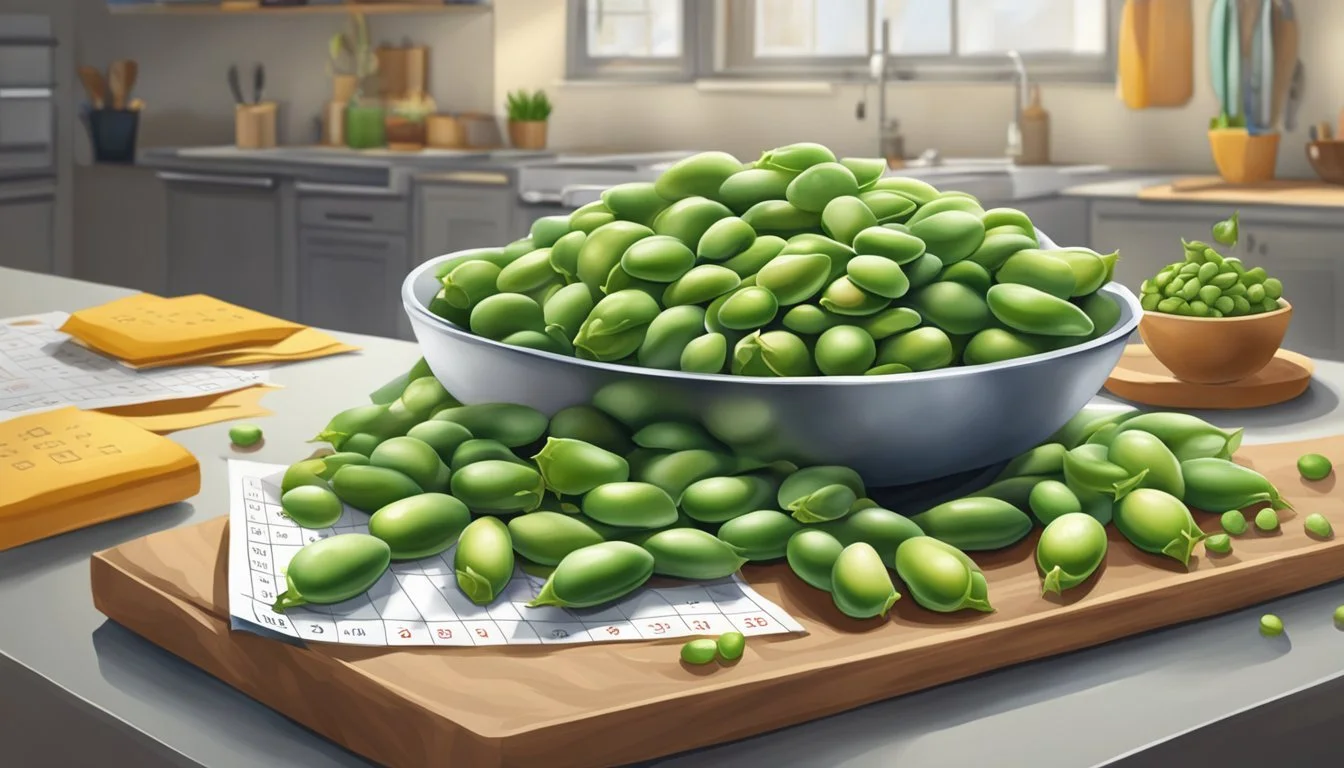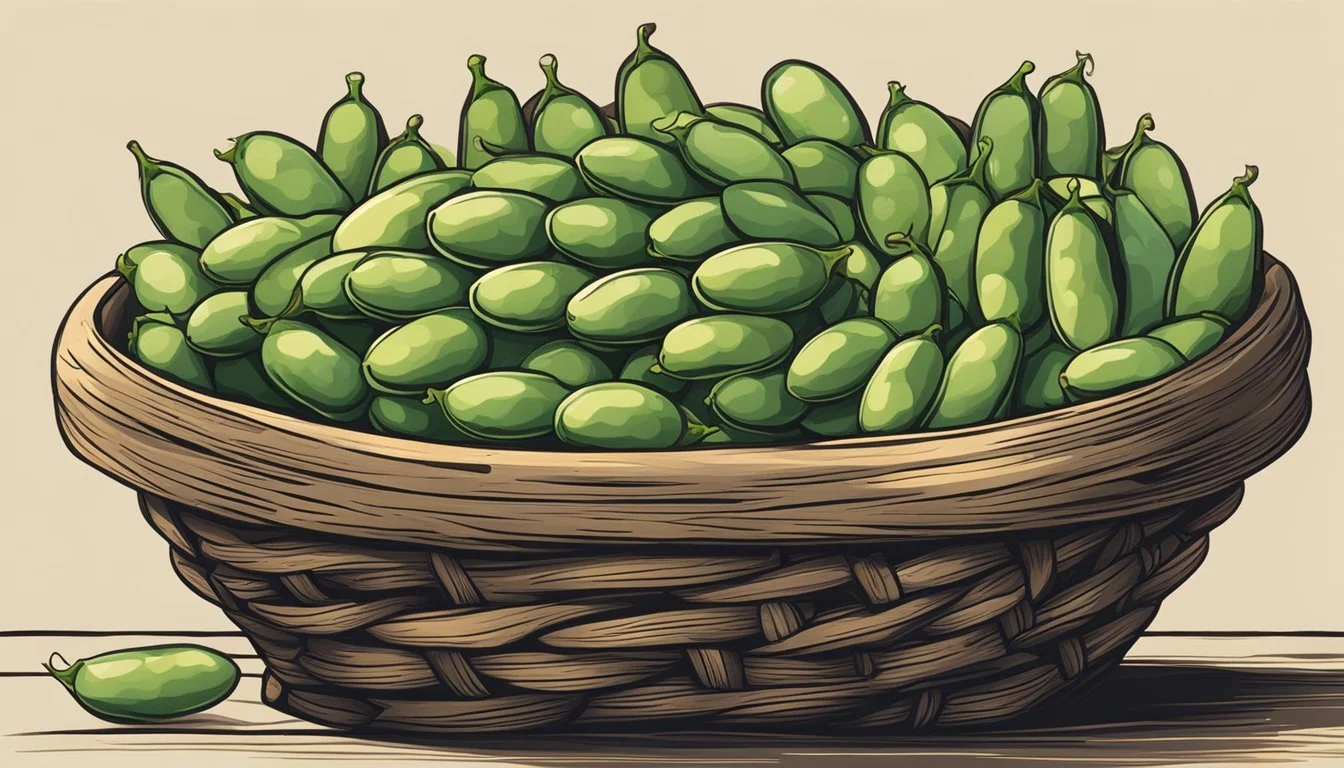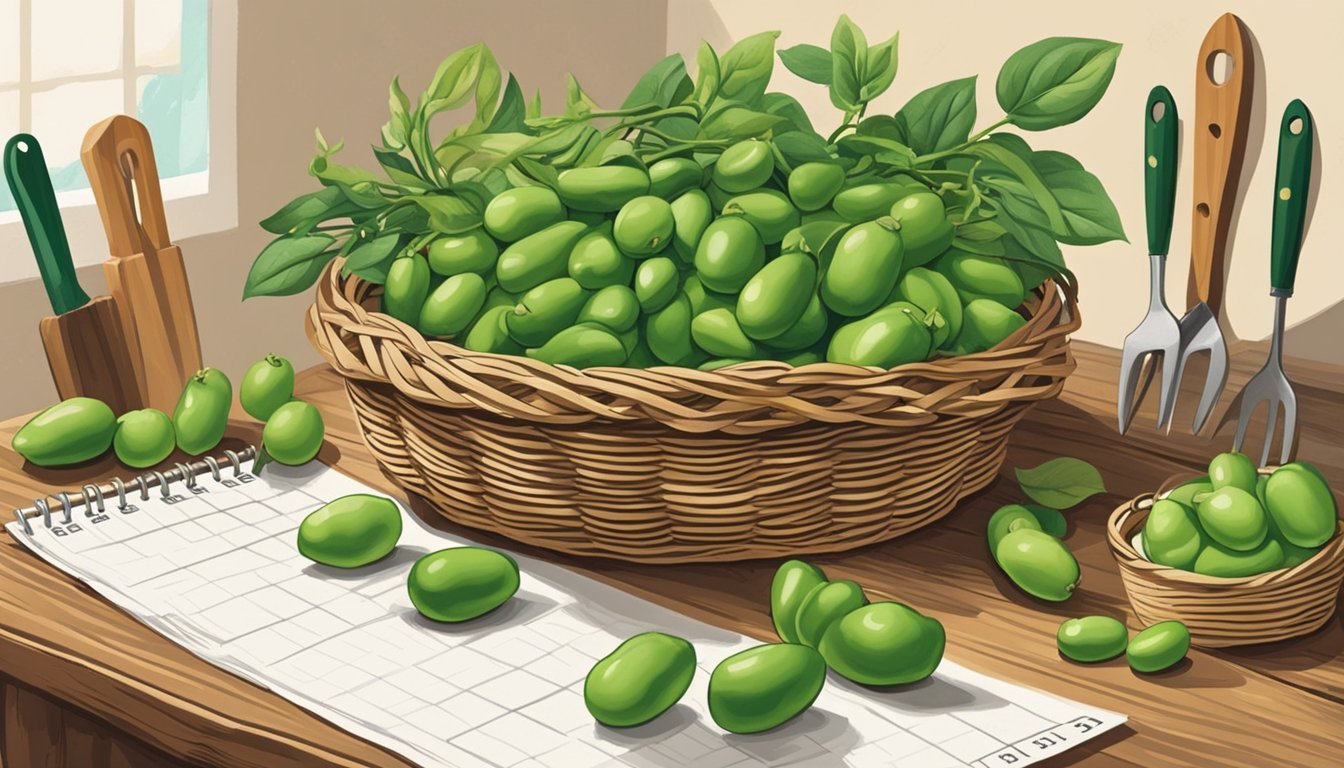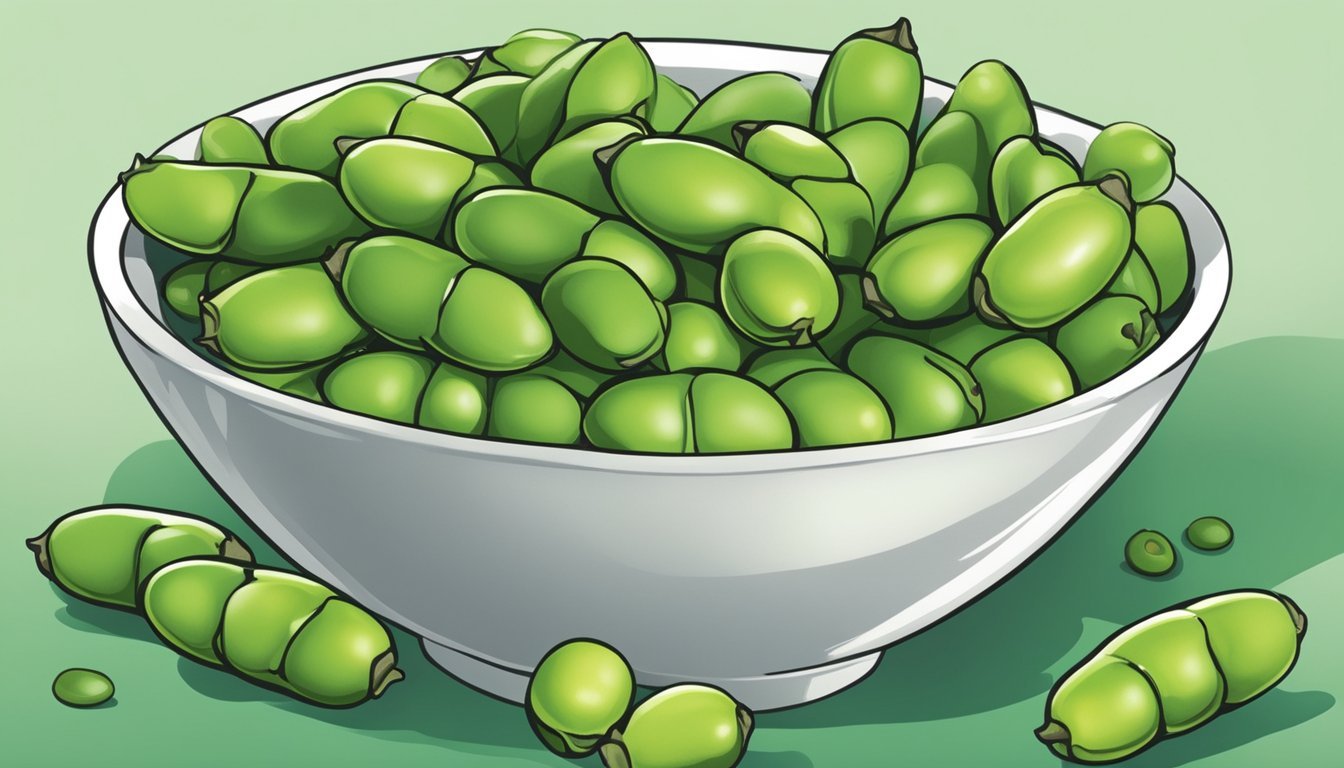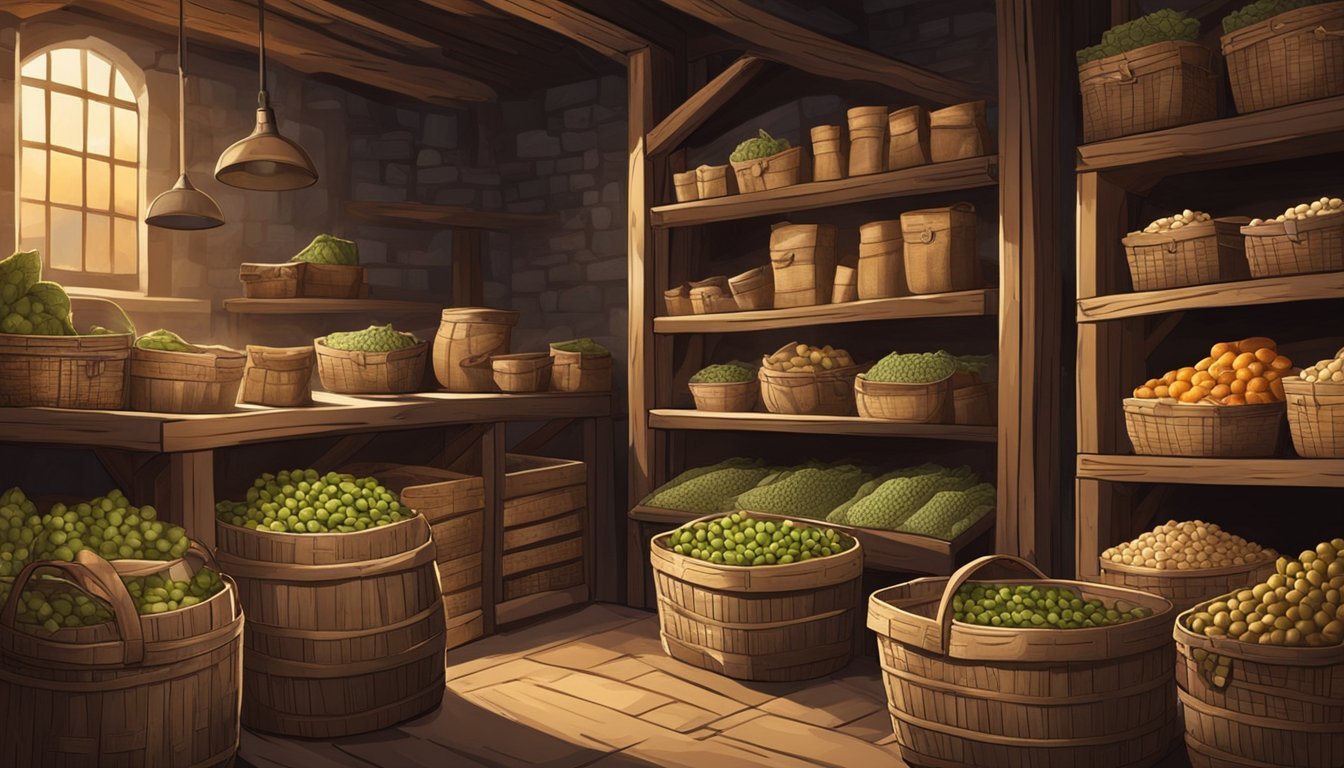How Long Do Fava Beans Last?
Shelf Life and Storage Tips
Fava beans, also known as broad beans or by their scientific name Vicia faba, belong to the Fabaceae family. This legume is valued for its rich, hearty flavor and substantial nutritional profile, enjoyed in a myriad of cuisines worldwide. A common question among both cooks and gardeners is the longevity of fava beans post-harvest or purchase. Understanding the correct storage methods is key to maximizing the lifespan and quality of these beans.
When stored properly, unshelled fresh fava beans can last in the refrigerator for about ten days to two weeks. They should be kept in a cool, dry, and well-ventilated area, preferably in a perforated bag placed in the crisper drawer to maintain freshness. In contrast, shelled and cooked fava beans will have a shorter refrigerator shelf-life, remaining good for consumption for up to four days. The difference in storage times can be attributed to the protective nature of the pod and the accelerated perishability once the beans are cooked.
For those who seek to keep fava beans even longer, freezing is a viable option. When stored in a freezer-safe container, fava beans may be preserved for several months. This method involves blanching the beans prior to freezing to retain their quality. Dry fava beans, which have been thoroughly dried out, can be kept in a pantry for an extended period, often several years, if stored in a dry, airtight container away from light and heat. The longevity of fava beans, therefore, greatly depends on the selected storage method and whether the beans are fresh, cooked, or dried.
Fava Beans Overview
Fava beans, also known as broad beans, faba beans, or by their scientific name Vicia faba, are a type of flowering plant in the pea and bean family Fabaceae. Cultivated for their large, tasty seeds, (how long do seeds last?) these beans are one of the oldest plants under cultivation, with a history that traces back to ancient civilizations.
Rich in nutrients, fava beans are lauded for their high levels of protein, which make them an excellent meat substitute in vegetarian diets. They are also a good source of dietary fiber and several essential minerals:
Iron: Vital for oxygen transport and DNA synthesis
Potassium: Contributes to nerve function and blood pressure regulation
Copper: Important for energy production and iron metabolism
Magnesium: Helps with muscle and nerve functions and steady heart rhythm
The beans are typically encased in a pod and must be removed before consumption. All parts of the fava bean plant are edible, including the leaves, flowers, and pod, though the seeds are the most commonly consumed part.
In addition to being consumed fresh, fava beans can also be dried, canned, or frozen, which affects their shelf life and culinary uses. When preparing and cooking fava beans, one should be aware of favism, a genetic enzyme deficiency that can lead to adverse reactions in susceptible individuals due to a substance in the beans. This condition, however, is rare.
Cultivation Essentials
To achieve a successful harvest, one must pay attention to specific growing conditions such as suitable soil, appropriate climate, watering needs, and pest management.
Planting and Soil Requirements
Fava beans flourish in well-drained soil with a pH range of 6.0 to 7.0 and require rich nutrients ideally enhanced with compost or well-rotted manure. For optimal growth, seeds should be sown directly into the ground at a spacing of approximately 6 to 8 inches apart in rows that are spaced 18 to 24 inches apart. Fava beans can also benefit from the inoculation with Rhizobium leguminosarum to improve nitrogen fixation.
Climate and Temperature Considerations
Fava beans are a cool-season crop best planted in early spring. They can withstand colder temperatures and slight frosts but the optimal temperature range for growth is between 40°F and 70°F. Excessive heat, especially above 80°F, can lead to diseases such as fusarium root rot and affect the bean development negatively.
Watering and Light Needs
These legumes require consistent moisture, particularly during flowering and pod formation. However, they should not be overwatered to prevent root rot. Fava beans prefer a full sun location but can tolerate partial shade. They thrive with at least 6 hours of sunlight per day to ensure healthy growth and yield.
Common Pests and Diseases
Fava beans can be susceptible to several pests and diseases. Aphids are common pests that may require control. Diseases such as powdery mildew, rust, broad bean chocolate spot, and mosaic virus can occur, especially when the plants are under stress or grown in humid conditions. Regular monitoring and appropriate treatment including proper air circulation and removal of affected plants can manage these issues effectively.
Fava Bean Growth Cycle
The growth cycle of fava beans is distinctly marked by cool-season planting and precise stages from germination to maturity. Understanding this cycle is crucial for timely sowing and harvesting.
From Germination to Harvesting
Once sown in suitable soil, fava bean seeds typically germinate within 10 to 14 days. They are notable for their preference for cool weather, with germination rates potentially slowed by warmer conditions. Seedlings soon give rise to sturdy plants that develop flowers. The pods begin to form after successful pollination, usually appearing as small swellings behind the flower petals.
The pods grow until they are plump, with the individual beans inside discernible to the touch. Harvested while the pods are still green and the beans inside have not yet hardened, fava beans offer the best flavor and tenderness during this stage. Depending on conditions, harvesting can occur approximately 75 to 80 days after planting.
Seasonal Planting Strategies
Fava beans are a cool season crop that can be sown in early spring, as soon as the soil can be worked, to take advantage of the cool weather ideal for their growth. They can also be planted in the fall in milder climates where they will overwinter and produce an early spring harvest.
For those employing fava beans as a cover crop, they have the added benefit of fixing nitrogen in the soil and helping to weed out unwanted growth. They typically are planted thickly in the fall, serve as a cover crop through the winter, and are harvested or tilled in before they set seed in early spring.
Fava Beans Nutritional Profile
Fava beans, also known as broad beans, are a nutrient-dense legume offering a variety of health benefits. They are particularly high in protein, making them an excellent food choice for vegetarians and vegans who need to meet their protein requirements.
Protein is essential for the body's growth and repair. In every 100 grams of cooked fava beans, one finds approximately 7.6 grams of protein. They are also rich in dietary fiber, which supports digestive health and can help in maintaining a healthy weight.
These beans are an excellent source of several minerals including potassium, magnesium, iron, and copper. Potassium is crucial for maintaining electrolyte balance and normal muscle function, while magnesium plays a role in over 300 enzymatic reactions in the human body, including energy production and muscle contraction. Iron is vital for the formation of hemoglobin, which transports oxygen throughout the body, and copper helps with the utilization of iron and the development of connective tissue.
Nutrient Amount per 100g (cooked) % Daily Value* Protein 7.6g 15% Potassium 461mg 10% Magnesium 43mg 10% Iron 2.36mg 13% Copper 0.179mg 20%
*Percent Daily Values are based on a 2,000 calorie diet. Your daily values may be higher or lower depending on your calorie needs.
In addition to these minerals, fava beans provide a range of B vitamins, particularly folate, which is involved in DNA synthesis and repair, making them an important food for women of child-bearing age.
Despite their nutritional benefits, fava beans should be consumed with caution by people with G6PD deficiency, a genetic condition that can result in a reaction to certain foods, including fava beans.
Harvesting and Storage
Harvesting fava beans at the right time and storing them properly ensures both longevity and quality. The key is to pick the beans at their peak and then store them in a way that maintains freshness.
Optimal Harvesting Techniques
When harvesting fava beans, one should be vigilant for the signs of maturity. Fava pods are typically ready to harvest when they are plump, and the beans within have swollen. It is advisable to pick the pods before they become too hard, which usually occurs when the beans are visible through the pod. Harvesting should be done on a dry day to minimize the risk of introducing moisture, which can lead to spoilage.
Storing Fava Beans Properly
Once harvested, fava beans should be removed from their pods and stored to preserve freshness. For immediate use, beans can be kept in a plastic bag in a refrigerator where they remain fresh for up to ten days. For long-term storage, fava beans can be dried; this process can take a couple of weeks depending on the humidity and temperature. The dried beans should be stored in an airtight container away from direct sunlight to maintain their quality.
Shelf Life Considerations
The shelf life of fava beans varies depending on their form. Fresh fava beans have a shelf life of approximately ten days in the refrigerator. If properly dried and stored, dry beans can last for a significantly longer period. It is pertinent to keep dried beans in a cool, dark place to maximize their shelf life. Storage conditions should be consistent to prevent the beans from absorbing moisture and possibly developing mold.
Health and Safety Information
Fava beans, a nutrient-rich legume, must be approached with caution due to specific health concerns associated with their consumption. This section outlines vital dietary considerations and potential allergic reactions.
Favism and Dietary Concerns
Favism is a hereditary condition linked to a deficiency in the enzyme glucose-6-phosphate dehydrogenase (G6PD). Individuals with this deficiency can suffer from hemolytic anemia when they consume fava beans, as these beans contain high levels of certain compounds that can trigger the breakdown of red blood cells. The severity of favism can vary, but it is particularly dangerous when it causes acute anemia, which may lead to kidney failure or even death in extreme cases.
Allergies and Toxins
While not common, some individuals may experience allergic reactions to fava beans or proteins within them. Symptoms can range from mild hives to severe anaphylactic reactions, necessitating immediate medical attention. Additionally, fava beans contain vicine and convicine, toxins which can be harmful in raw or improperly cooked beans (how long do cooked beans last?). Therefore, it's critical to cook fava beans thoroughly to reduce the risk of foodborne illness and deactivate these compounds.
Cooking and Culinary Uses
Fava beans are versatile in the kitchen and can be used in a multitude of dishes, ranging from simple to gourmet. Their buttery texture and slightly nutty flavor complement various ingredients.
Recipes: Fava beans are ancient legumes that have been incorporated into Mediterranean cuisine for centuries. They are commonly added to salads, blended into a rich pesto, or mixed with grains for a hearty side dish.
Salads: A springtime favorite, fava beans add a burst of green and a tender bite to salads. They go particularly well with Mediterranean flavors like olive oil, lemon, and herbs.
Example Salad Combination:
Fava beans (blanched and peeled)
Arugula (or another fresh, peppery green)
Feta cheese (crumbled)
Olive oil and lemon juice (for dressing)
Pesto: For a twist on the classic pesto, chefs can substitute fava beans for some or all of the basil, resulting in a creamy and filling spread that pairs well with pasta or crusty bread.
Classic Fava Bean Pesto Ingredients:
Garlic (minced)
Fava beans (cooked and peeled)
Parmesan cheese (grated)
Olive oil (extra virgin)
Pine nuts (optional)
Cooking with Butter and Garlic: To emphasize their natural creaminess, fava beans can be gently sautéed in butter with a touch of garlic. This simple preparation allows the beans' flavor to be the star.
Ancient Grains: Fava beans also complement ancient grains such as farro or quinoa, creating nutritious and satisfying dishes that carry a hint of Mediterranean tradition.
In preparing fava beans, chefs should remember that fresh beans need to be shelled and their waxy outer coating removed prior to cooking. This extra step is well worth the effort, as the resulting tender beans are a culinary treat. Whether incorporated into a refreshing salad, mashed into a velvety pesto, or simply cooked with garlic and butter, fava beans elevate a meal with their delightful flavor and texture.
Varieties and Related Species
Fava beans, known botanically as Vicia faba, offer a range of varieties that adapt to different growing conditions and climates. They share a family with several other notable legumes, providing a rich tapestry of plant-based protein sources.
Different Types of Fava Beans
Aguadulce: This variety is known for its large size and sweet flavor, which makes it well-suited for various culinary uses.
Extra Precoce A Grano Violetto: Characterized by its distinctive purple seeds, this early maturing type is appreciated for its taste and ornamental value.
Each variety has specific attributes tailored to various climates and growing seasons, and a gardener's choice may hinge on these factors.
Closely Related Legumes
Fava beans are part of the broader Fabaceae family, sharing genetic and characteristic traits with:
Peas (Pisum sativum): Often sweet and eaten fresh, shelled, or in pods.
Chickpeas (Cicer arietinum): Also known as garbanzo beans, valued for their nutty flavor and versatility.
Lima Beans (how long do lima beans last?) (Phaseolus lunatus): These come in bush and pole varieties, with a buttery flavor and starchy texture.
These legumes collectively contribute essential nutrients and are integral parts of global cuisines.
Practical Gardening Tips
In the realm of practical gardening, one can not only benefit from the bountiful harvest of fava beans but also from their utility as a cover crop and their role in crop rotation and companion planting strategies.
Using Fava Beans as a Cover Crop
Fava beans serve as an exceptional cover crop during the cooler seasons due to their rapid growth and substantial biomass. As a winter cover crop, they shield the soil from erosion while their roots fix atmospheric nitrogen, enriching the soil for subsequent plantings. Gardeners often sow fava beans in the fall allowing them to grow through the winter and get tilled into the soil before spring planting.
Maintenance: Regular watering and weed control ensure a healthy cover crop.
Benefits:
Enhances soil fertility
Prevents weed proliferation
Protects against soil erosion
Crop Rotation and Companion Planting
Crop rotation is crucial for maintaining soil health, and fava beans can be an integral part of this process. They are typically rotated with crops that demand high amounts of nitrogen, such as corn or squashes, benefiting from the improved soil conditions favas leave behind.
Companion Planting with fava beans also promotes a healthier garden. Fava beans are good neighbors to most vegetables, but they pair particularly well with:
Green beans: As they mature at different rates, allowing for staggered harvests.
Strawberries and carrots: These companions benefit from the nitrogen-rich soil and pest-repelling properties of favas.
Implementing these strategies optimizes the use of space and resources in a garden, leading to enhanced yields and sustainable gardening practices.

